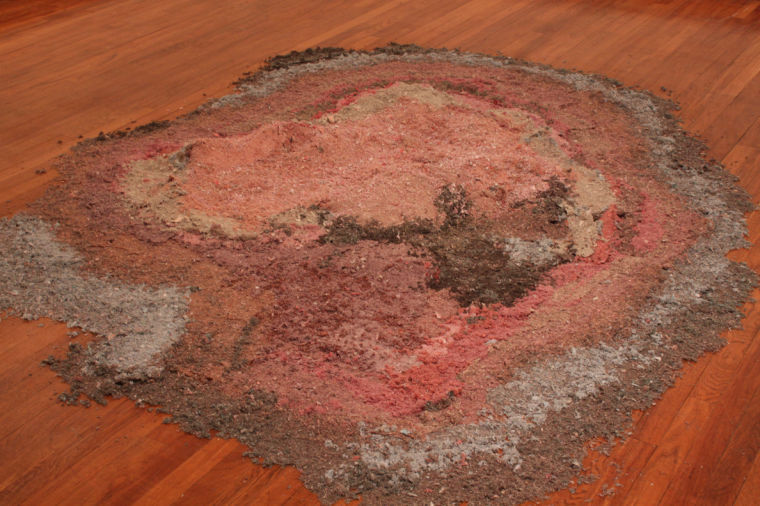Artist residency program gains steam
February 21, 2014
Graduating art students are about to face growing opportunity in the Steel City.
A new residency program known as Bunker Projects — located at 5106 Penn Ave.’s second and third floors — is offering art students the opportunity to collaborate and immerse themselves in a growing community.
According to its website, the initiative will rotate different artists in and out of the space about every three months. The space includes a work area and a gallery to show the artists’ works.
The Bunker Projects is located on the Penn Avenue corridor, which has become an emerging hub for artists and galleries. The location offers opportunities for resident artists to build their networks and exchange ideas with other artists.
Julia Betts, a senior majoring in studio arts, will be the first Pitt student to take advantage of The Bunker Projects’ new space when her residency begins in September.
“I looked it up online and it said it was a laboratory for artists to experiment, which I thought was interesting,” Betts said.
The three Bunker Projects directors, Abigail Beddall, Jessie Romelt and Cecilia Ebitz found Betts’ work compelling.
“We were really interested in her process of identity and the multimedia kind of lean on her work,” Beddell said. “We like to showcase artists that are multi-disciplinary, working in many fields.”
Betts’ process is the culmination of three years at Pitt immersed in the University’s studio arts program. She created “Skin Blurs,” her first project, with help from Pitt’s Office of Undergraduate Research in the summer of 2012.
For “Skin Blurs,” Betts manipulated self portraits into sculptures. She wore the sculptures in a series of photographs that make up the body of her work.
That project led directly to “Detritus,” her most recent effort, which features a dust that Betts makes from destroying self portraits.
“They’re pictures of myself that I layer with gel,” she said. “And then I roll them up. Then I saw through them or I drummel through them. When I’m doing this process, it makes this dust as an artifact and I started to collect the dust and its different colors and then layer it on the floor as these layers of strata.”
Betts will share her work and ideas with other artists during the course of her residency at the Bunker Projects.
“I’m really excited to see who they pair me with, because they said it would be someone who complemented me,” Betts said.
The roommates living in the Bunker Projects won’t have to collaborate on specific projects, Beddall said. But as the artists share networks and ideas, the surrounding community grows stronger and broader. According to Beddall, the goal is to build a stronger artistic community in Pittsburgh.
After graduating from Penn State, Beddall and Romelt witnessed this process firsthand.
“Just out of college, we didn’t have the materials or the resources that we were used to,” Beddall said.
Living together with a third roommate in a windowless three-room apartment, they supported each other.
“People would just kind of show up and be painting there. There was definitely a lot of collaboration,” Beddall said. “And even if there were no [collaborative projects], there would be ideas and concepts always floating around, always conversation.”
In 2012, Beddall and Romelt decided their experience was worth repeating. They moved to Pittsburgh, keeping their eyes on the architecture. Beddall said she was fascinated by the abandoned warehouses, churches and “odd spaces.”
Eventually, they found an “odd space” owned by the Bloomfield-Garfield Corp. It was dilapidated and in serious need of repair. The coporation often works with small entrepreneurs to turn around crumbling real estate.
“We acquire vacant and abandoned property from the city’s property reserve to pass on to responsible and financially sound developers for redevelopment.” Bloomfield-Garfield Executive Director Richard Swartz said.
Swartz agreed to let the Bunker Projects use the property rent-free while renovations are underway. Once the apartments are finished, the artists will begin paying the Bunker Projects, who will payr rent reduced from the average rent of the space for several years.
According to Swartz, the Bloomfield-Garfield Corp. had similar arrangements with other residents and small-business owners in the past.
Almost 35 years of this work and other initiatives has completely changed the Penn Avenue Arts District, Swartz said. By flipping properties and keeping their rent low, the corporation has managed to revitalize the neighborhood and fight off gentrification.
Beddall knows incoming artists can have a strained relationship with the community, but hopes the Bunker Project bridges some of these gaps between the artists and other community residents.
“Developers always use artists as the guinea pigs,” she said, “and we’re aware that we don’t necessarily have equity with the building, but we trust that this is as good an opportunity for [the local community] as it is for us.”



